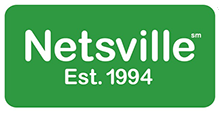Chatbot backlash
Adding a Chatbot to your website in 2018 was one of the most convenient ways to provide 24/7 support for your customers. Some Chatbots are highly monitored systems that have been fine-tuned to provide excellent service, while others can be significantly less helpful and seem like you are just talking in circles with no end in sight. These are the situations when a helpful chatbot can turn into a hassle and create backlash. The most common complaint is that Chatbots just are not smart enough, and due to that they turn extremely frustrating. Check out how to combat Chatbot backlash with the article below from MarTech Today!

How Marketers Can Counter Chatbot Backlash
With such a wide variation in chatbot performance, users may begin to avoid the conversational interfaces unless marketers take action.
Barry Levine on January 7, 2019 at 8:34 am
Eighty percent of CMOs are using chatbots or expect to do so within two years, according to a recent Oracle survey (free, registration required.) But they would best get ready for a consumer backlash.
So said Forrester, which predicted late last year that there will be “a community-based revolt against corporate chatbots” in 2019.
Following in the footsteps of the GetHuman movement, which offered tips to avoid phone menu mazes when trying to reach customer service, consumers will soon trade tips on how to avoid dealing with chatbots because of the time and frustration involved, Forrester said.
And recent research on customer experience trends by open software service company Acquia found that 45 percent — nearly half — of consumers find chatbots “annoying,” based on responses from more than 5,000 consumers and 500 marketers in North America, Europe and Australia.
What can marketers do to help their chatbots avoid the fate of hated interactive-voice-response (IVR) phone tree menus?
Acquia VP Sylvia Jensen has said that her company’s research shows chatbots are misused when they are “implemented in isolation,” instead of integrated into a personalized customer journey.
“The backlash is real,” said Comm100 VP of product Jeff Epstein. His company provides communications solutions for digital customer experience, such as chatbots or SMS.
“But,” he added, the cause is “not the technology, but the planning, deployment and setting of expectations” by marketers.
He pointed to an unnamed airline’s chatbot that sets clear expectations by noting it can allow a user to check a reservation, but it directs the user to a live agent to make the reservation.
Vivek Lakshman, VP of Products at Chatlets.ai, told me he believes “the backlash has begun,” although it is still relatively “insignificant.”
Most marketers are reluctant to talk about negative reactions, he said, because it would discourage users from interacting with their brands’ chatbots.
Not smart enough
Some chatbot problems are more than just their failure to accurately parse the user’s intent. For instance, Lakshman noted one occasion where an irate customer didn’t bother to have a conversation with a chatbot, but just started uploading photo after photo showing a product’s malfunction.
In a case like that, he says, the chatbot’s best response is simply to get of the way by saying something like: “It looks like you have a problem. Can we refer you to a human agent?”
In another case, a user wrote a long conversation that first seemed to indicate product dissatisfaction, and then possibly an intent to purchase, before finally mentioning the desire for a coupon — which turned out to be the actual reason for the inquiry.
Lakshman suggests that marketers create a priority list for responding to multiple cues of user intent, for instances like this.
The top item on the list, he said, should be support, since that involves an existing customer needing help, and the marketer could determine the hierarchy of the other cues. In the case mentioned, then, the chatbot would have suggested customer support before directing the user to a live agent.
He also offered some other recommendations that could help marketers avoid user backlash.
Make sure, he said, the welcoming message identifies that the user is talking to a bot, not an actual human. That helps set the expectations.
Perhaps most importantly, he said, the user should be able to summon a human agent at any time, not just when the bot tosses the conversation to a live person. For instance, permanently show a brief message that a live agent can be called just by typing “help.” Or offer an ever-present link that brings a person to the conversation.
If the bot cannot understand the user in three tries, the marketer should set up the logic so the conversation is automatically directed to a live agent, and the agent should introduce him/herself when taking over.
Agents should have the ability to monitor selected chatbot-user conversations in real-time, and to take over if things are not going well.
Sweetening the experience
Epstein noted that some chatbot platforms offer flags to the agent, employing such techniques are real-time sentiment analysis to indicate which of many monitored chatbot/user conversations are not going well.
Codes for discounts should be available to agents, Lakshman said, so they can be dispensed if a customer has had a bad experience.
Read More at MarTech Today
Based in Rochester, New York, Netsville is an Internet Property Management company specializing in managing the Digital Marketing, Technical, and Business Solutions for our customers since 1994. For more information, please click here.






